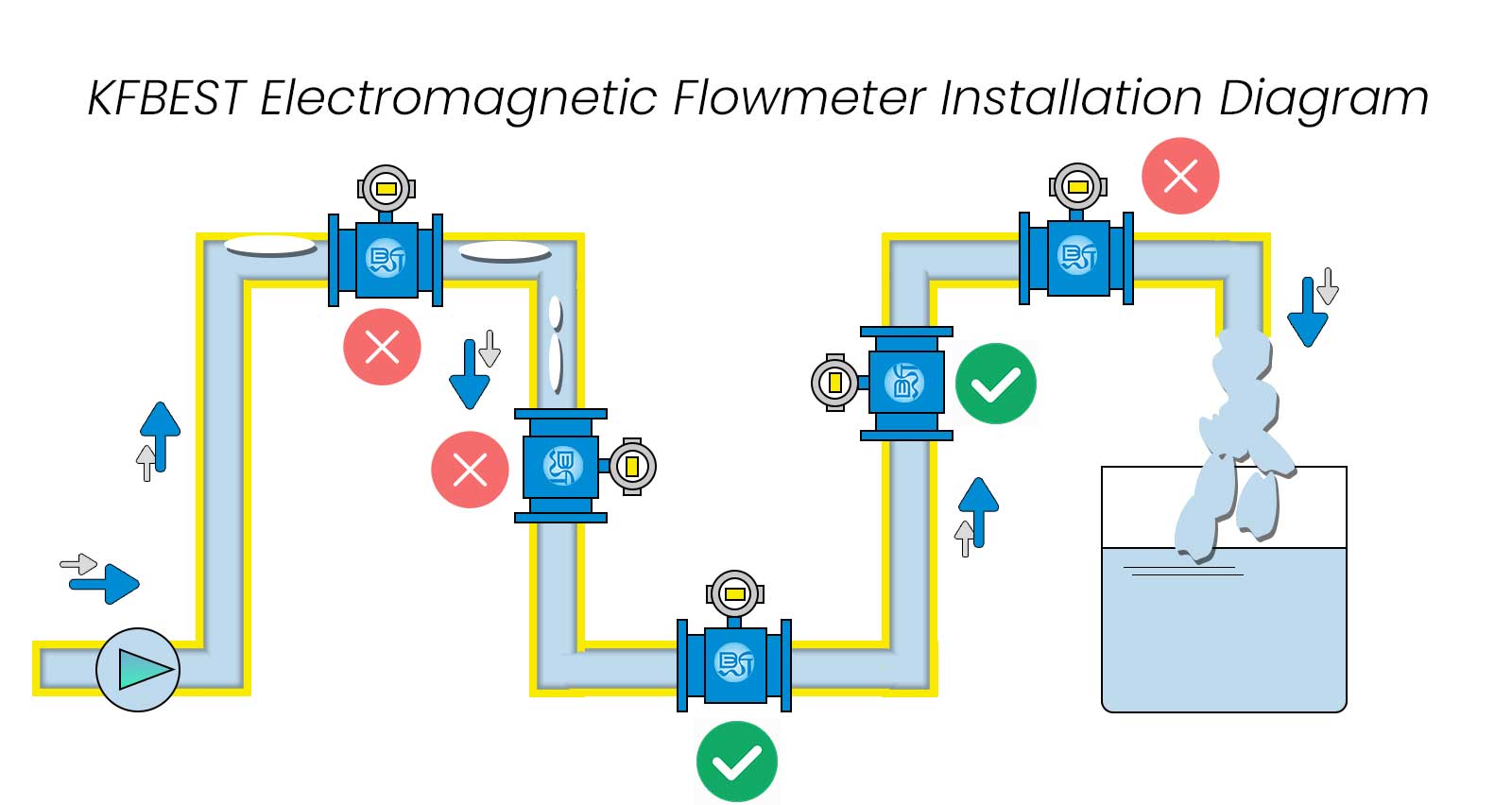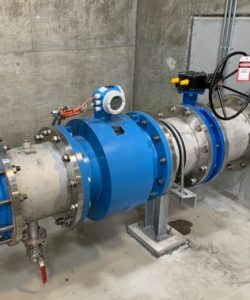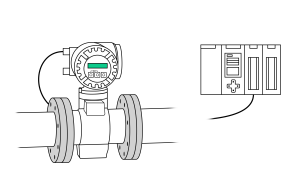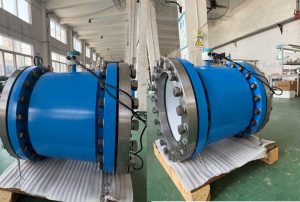Electromagnetic flowmeters have become the gold standard in fluid measurement for industries such as water and wastewater treatment, food and beverage, pharmaceuticals, chemicals, and power generation. Their high accuracy, no moving parts, and low maintenance needs make them the preferred choice for engineers worldwide. However, one recurring challenge many operators face is the empty pipe alarm.
An empty pipe alarm is triggered when the flowmeter detects that the electrodes are not fully covered with conductive liquid. This situation not only interrupts operations but can also cause false readings, unnecessary downtime, and potential process inefficiencies. For industries that depend on precise flow measurement, preventing this problem is crucial.
In this comprehensive guide, we’ll explore five proven ways to prevent empty pipe alarms in electromagnetic flowmeters, supported with practical installation tips, real-world examples, and best practices for engineers and plant operators.
What Is an Empty Pipe Alarm in Electromagnetic Flowmeters?
An empty pipe alarm is a built-in diagnostic function in most modern electromagnetic flowmeters. Its purpose is to detect whether the measuring electrodes are in direct contact with the process liquid. When the electrodes are not fully submerged—due to trapped air, partial filling, or improper installation—the flowmeter interprets the condition as an “empty pipe.”
This safety feature is essential because electromagnetic flowmeters require a completely full pipe to ensure accurate readings. If the electrodes are exposed, the measurement becomes unstable, leading to errors or even a false “zero flow” signal.
Why Preventing Empty Pipe Alarms Matters
While the empty pipe detection function is useful, frequent alarms can cause several issues:
-
Unplanned downtime due to unnecessary system shutdowns.
-
Inaccurate flow measurement leading to production losses or regulatory compliance risks.
-
Increased maintenance costs as technicians may be dispatched unnecessarily.
-
Reduced trust in instrumentation, making operators rely less on automation and more on manual monitoring.
Preventing false alarms not only improves operational reliability but also extends the lifespan of your flowmeter.
1. Install the Flowmeter in the Right Position
Correct installation is the first and most important step in preventing empty pipe alarms. The position of the flowmeter directly influences whether the electrodes remain submerged.

Best practices for installation:
-
Avoid high points in the pipeline where air tends to accumulate.
-
Install vertically with upward flow to guarantee that the pipe is always full of liquid.
-
Place the flowmeter in a downstream section where the flow is stable, at least 5–10 pipe diameters away from elbows, pumps, or valves.
-
Never install at the suction side of a pump where cavitation and air pockets may occur.
By following these rules, you reduce the chance of trapped air interfering with electrode contact.
2. Maintain Full Pipe Conditions
An electromagnetic flowmeter can only function correctly if the pipe remains completely filled with liquid. Empty pipe alarms are often triggered when liquid drains out during shutdowns or when the flow is too low.
Solutions to maintain full pipes include:
-
Installing a U-shaped pipe or positioning the flowmeter in the lowest section of the system.
-
Adding a downstream back-pressure valve to prevent liquid from siphoning or draining.
-
Ensuring sufficient line pressure to keep the pipeline filled, especially in gravity-fed systems.
-
Avoiding oversized flowmeters for low-flow applications, as they may not stay submerged at minimal flow rates.
These design considerations ensure that electrodes always stay in contact with the fluid.
3. Optimize Empty Pipe Detection (EPD) Settings
Most modern electromagnetic flowmeters are equipped with an empty pipe detection (EPD) feature that uses electrode impedance to determine whether the pipe is full. However, default settings may not always suit your application.
Optimization tips:
-
Adjust the sensitivity level so that the meter does not trigger an alarm for temporary bubbles or small voids.
-
Configure a time delay before the alarm activates, preventing false alarms caused by short-term disturbances.
-
If the process guarantees that the pipe is always full, you may disable the EPD function altogether (though this should only be done after a risk assessment).
Proper configuration balances sensitivity with reliability.
4. Prevent Entrained Air and Gas Pockets
Entrained air is one of the most common causes of empty pipe alarms. When air bubbles pass through the electrodes, the flowmeter may falsely detect an empty condition.
Ways to reduce entrained air include:
-
Installing air release valves upstream of the flowmeter.
-
Ensuring proper pump suction design to avoid vortexing and cavitation.
-
Keeping the flowmeter at least 5 pipe diameters downstream and 2 diameters upstream from fittings that create turbulence.
-
Maintaining adequate system pressure to prevent gas breakout.
By eliminating air and gas pockets, you create stable conditions for accurate measurement.
5. Perform Regular Maintenance and Calibration
Even with proper installation and settings, poor maintenance can still cause empty pipe alarms. Contaminants on the electrodes or grounding issues can mimic empty pipe conditions.
Maintenance checklist:
-
Clean electrodes regularly to remove scaling, grease, or biological growth.
-
Inspect grounding and shielding connections to minimize electrical noise.
-
Calibrate EPD settings periodically to match current process conditions.
-
Replace worn-out liners or electrodes if they show signs of corrosion or abrasion.
A consistent preventive maintenance plan ensures long-term reliability.
Additional Tips for Preventing Empty Pipe Alarms
Beyond the five main strategies, consider these additional best practices:
-
Use flow conditioners in highly turbulent systems.
-
Choose the right electrode and liner materials to suit the process fluid.
-
Ensure proper grounding rings or electrodes are installed, especially in plastic or lined pipelines.
-
Train operators on alarm interpretation so they can distinguish between genuine empty pipe conditions and false triggers.
Industry Applications Where Empty Pipe Prevention Is Critical
Certain industries are more prone to empty pipe issues due to the nature of their processes:
-
Water and wastewater treatment: Frequent start-stop operations can leave pipes partially filled.
-
Food and beverage: Air entrainment during product transfer can cause false alarms.
-
Chemical processing: Corrosive fluids may damage electrodes, creating false signals.
-
Power generation: Cooling water systems rely on uninterrupted measurement for safety.
In each case, preventing empty pipe alarms is directly tied to process efficiency and safety.
Conclusion
Empty pipe alarms in electromagnetic flowmeters are a common but preventable challenge. By focusing on proper installation, maintaining full pipe conditions, optimizing detection settings, eliminating air pockets, and ensuring regular maintenance, you can significantly reduce false alarms and improve the reliability of your flow measurement system.
For engineers and operators, preventing empty pipe alarms is not just about avoiding nuisance alarms—it’s about ensuring accurate measurement, operational efficiency, and system reliability. By applying the strategies outlined in this guide, you can keep your electromagnetic flowmeter running smoothly and confidently.
We are a manufacturer of automatic flow meters with many years of experience in the industry. We have strong independent research and development capabilities and are a leader in the flow meter industry. Our main products include electromagnetic flow meters, vortex flow meters, turbine flow meters, ultrasonic flow meters, Coriolis flow meters, various solenoid valves, level meters, control units and valves, etc. Welcome to purchase – KFBEST





